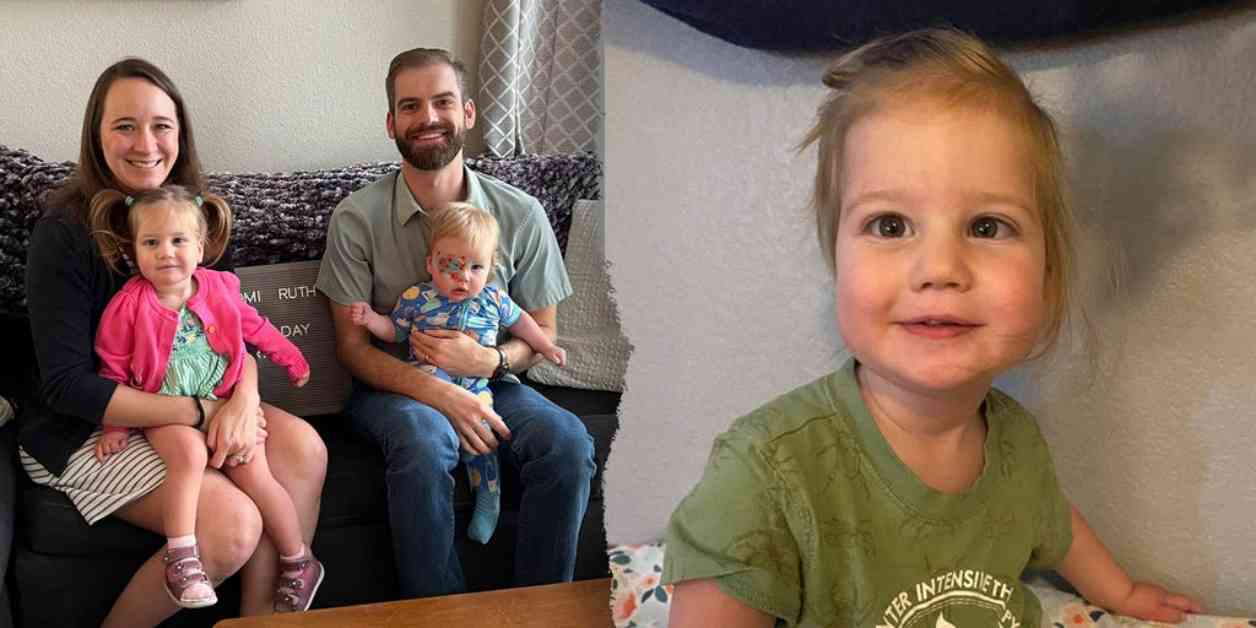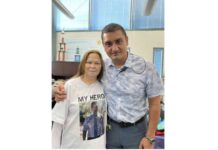A Desperate Mother’s Fight for Life-Saving Treatment for Her Daughter
In a world where rare diseases often go unnoticed and untreated, one mother’s frantic efforts to save her daughter’s life have brought attention to a little-known neurological disorder known as Spastic Paraplegia 50 (SPG50). Rebekah Lockard, a Colorado resident, is on a mission to raise funds for her 3-year-old daughter, Naomi, who is one of fewer than 100 people in the world diagnosed with SPG50. This rare, fatal disease gradually leads to cognitive impairment, muscle weakness, speech impairment, and paralysis, with most individuals succumbing to the illness by their 20s.
A Heartbreaking Diagnosis
Naomi Lockard’s journey with SPG50 began shortly after her birth in 2017, when her parents noticed developmental delays. By six months of age, it was clear that Naomi was not meeting typical milestones, prompting her parents to seek medical intervention. After undergoing MRI and genetic testing, the Lockard family received the devastating news that Naomi had inherited two mutated copies of the gene responsible for SPG50. To make matters worse, a subsequent round of genetic testing revealed that Naomi’s newborn brother, Jack, also carried the same genetic mutation.
A Glimmer of Hope Through Experimental Gene Therapy
Despite the grim prognosis associated with SPG50, the Lockard family found a ray of hope in an experimental gene therapy trial initiated by another parent, Terry Pirovolakis. This groundbreaking treatment, which involves injecting cerebral spinal fluid through a lumbar puncture, has shown promising results in halting the progression of the disease in young children like Jack Lockard. With early intervention, Jack has made significant strides in his development, defying the odds that once predicted paralysis and quadriplegia.
Challenges in Funding and Accessibility
While the experimental gene therapy has shown remarkable potential in improving the lives of children with SPG50, the main obstacle lies in funding and accessibility. The high cost of developing treatments for rare diseases like SPG50, coupled with the limited market appeal for pharmaceutical companies, has hindered the progress of clinical trials and hindered widespread access to life-saving therapies. Without adequate financial support, families like the Lockards are left scrambling to raise funds to afford these costly treatments.
A Heroic Effort to Save Lives
Terry Pirovolakis, the driving force behind the experimental gene therapy trial, has dedicated his life savings and resources to finding a cure for his son and other children with SPG50. His relentless pursuit of a treatment that could save lives has inspired a global movement to support families affected by rare diseases. Through his nonprofit organization, CureSPG50, Pirovolakis is working tirelessly to secure funding for further research and clinical trials, with the ultimate goal of making the therapy accessible to all children in need.
A Call to Action
As families like the Lockards continue to fight for access to life-saving treatments, the urgent need for financial support and advocacy remains critical. With the looming threat of paralysis and premature death facing children with SPG50, time is of the essence in securing the resources needed to advance research and provide hope for a brighter future. By raising awareness, mobilizing communities, and advocating for policy changes, we can make a difference in the lives of those affected by rare diseases and ensure that no child is left behind in the quest for a cure.

















